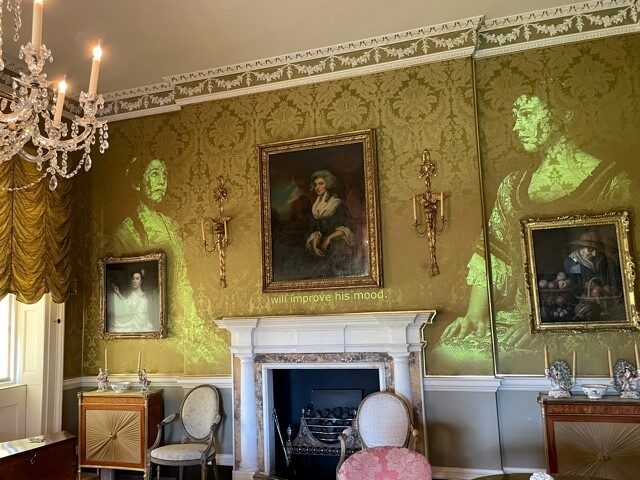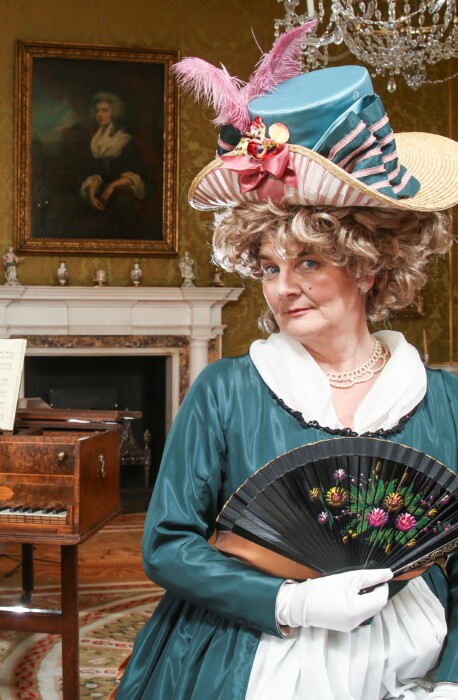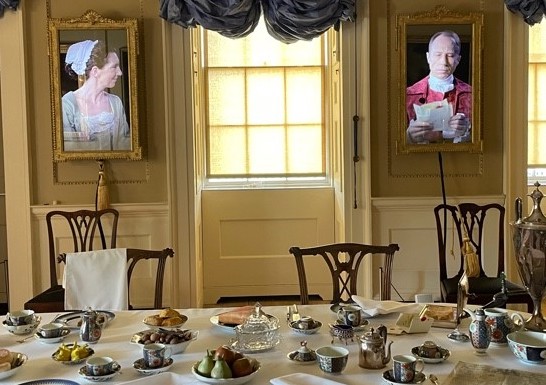One of Bath’s best known attractions, No.1 Royal Crescent, has reopened to include a remarkable new immersive experience, which will allow visitors to see life as it was lived in Georgian Bath during the late 1700s.
Using an exciting and innovative mix of digital projections and soundscapes, the house comes to life as you wander through, from the Dining Room and stunning Withdrawing Room, the lavishly decorated backdrops for daily life in fashionable Georgian Bath to ascending the grand staircase up to the Gentleman’s Bedroom with its exquisite views across the Royal Crescent.
The hidden life below stairs is also revealed, as the tour continues through the house, to the amazingly preserved Georgian kitchen, following in the footsteps of the hardworking servants.

The reimagined visitor experience will also build on the huge upswing of interest in the Georgian period, as well as Bath’s historical and architectural significance, thanks to the success of TV shows such as Bridgerton on Netflix, ITV’s detective drama, McDonald and Dodds, and The Pursuit of Love on the BBC
In all these shows, the Royal Crescent provided an elegant backdrop, with No.1, as its name suggests, the impressive first building of the iconic curving terrace of 30 houses. Built between 1767 and 1774, at the height of Georgian fashion. the house subsequently providing lodgings for Regency high society, dubbed ‘the ton’ after the contemporary phrase for etiquette, or good manners, ‘le bon ton’.
Created by York-based museum and heritage design experts, PLB Projects, the new interpretation is based around how a Georgian Bath town house was both staffed and inhabited in the 18th century and invites visitors to immerse themselves in the period, by means of projections and overheard conversations relating to matters of business including the transatlantic slave trade, war, gambling, domestic servitude and gossip.
Due to current pandemic restrictions, the model for opening the house to the public has been adapted to provide safe exploration for self-guided tours around the house. Visitors are invited to join an imagined family newly arrived in Bath for the season, consisting of head of the household, Thomas, his wife Amelia, their two daughters Charlotte and Alice, and wayward eldest son, Richard (who has a fondness for Bath’s more scurrilous opportunities). Other family members are also mentioned as the experience unfolds.

The role of the family as they go about a typical day in the house, is to demonstrate life as it was lived in Georgian Bath during the 1770s and ‘80s. Their conversations reveal that they too had a lifestyle that wasn’t entirely what it seemed, that superficiality often lay beneath the glamor, while exploitation of the poor and less fortunate was at its core. By eavesdropping we learn that women had no power and were widely regarded as mere commodities to be controlled, whether they were married or not. Through Richard’s conversations with his father, Thomas, we also understand that Bath was a city where fortunes could be won and lost very quickly.
In the house’s various rooms, corridors and stairwells, intimate aspects of life in the city during the Georgian Era will be revealed including an honest discussion about the Transatlantic Slave Trade and Caribbean plantations that created the profits used to build much of Georgian Bath.
“The pandemic has proved to be a huge challenge for our sector and we are very grateful for funding received from both the National Lottery Heritage and Cultural Recovery Grants,” said Bath Preservation Trust’s Director of Museums, Claire Dixon. “This funding has enabled us to transform this museum into a modern, exciting visitor experience whilst still ensuring the safety of all visitors. Our authentically dressed rooms presented alongside an immersive experience demonstrates how a historic house can provide something for everyone and we are thrilled to be opening our doors once again.”
For details on opening days and times, ticket prices, becoming a Member, guided tours and visitor safety procedures visit www.bath-preservation-trust.org.uk / Twitter @BathPresTrust / Facebook /@bathprestrust / Instagram @bath_preservation_trust
Main photo: Richard Wyatt


